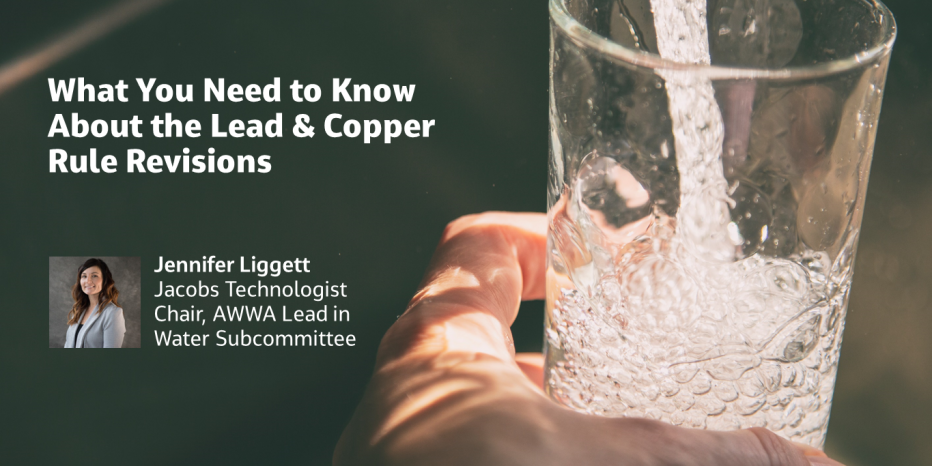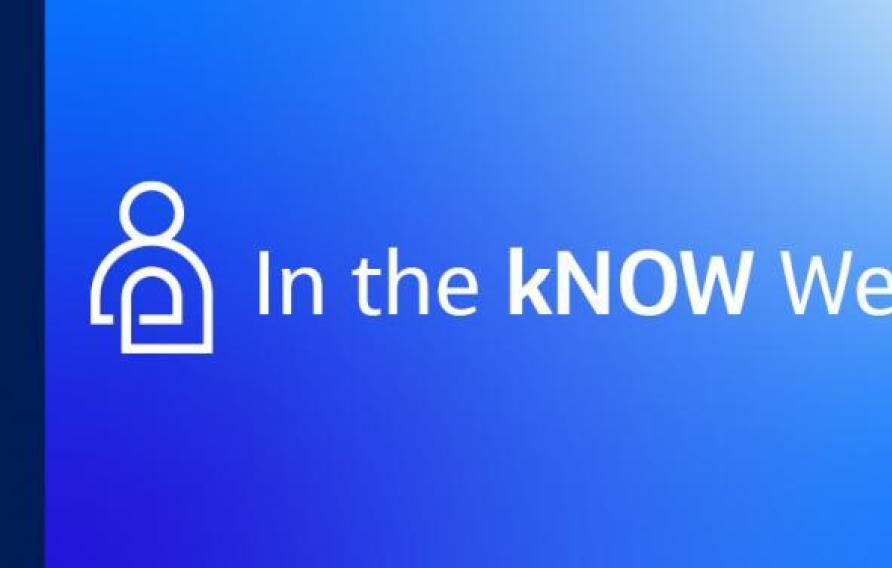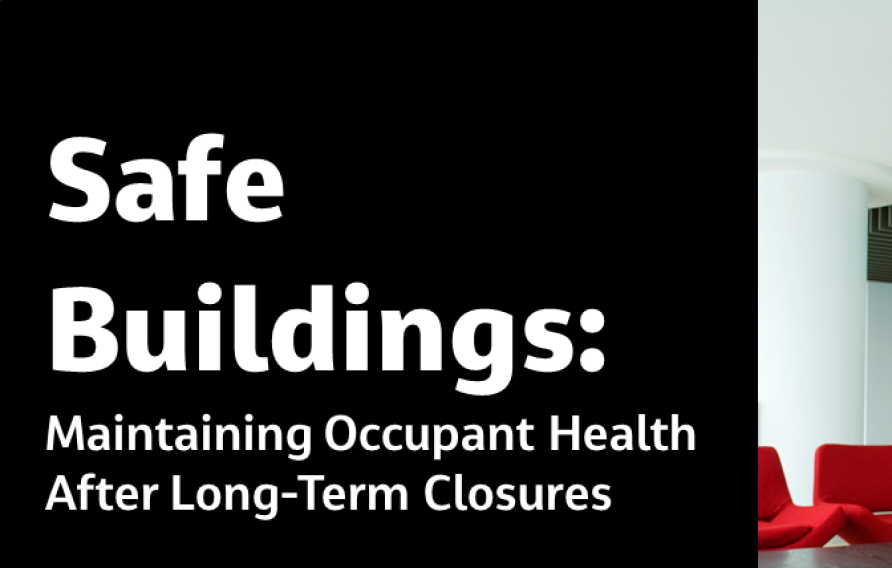
By Jennifer Liggett, Jacobs Technologist and Chair of the American Waterworks Association (AWWA) Lead in Water Subcommittee
I don’t know about your holiday reading, but mine included reviewing the pre-publication of the U.S. Environmental Protection Agency (EPA)’s Long-Term Revisions to the Lead and Copper Rule (LCR) that was finalized on December 22, 2020. The more than 400-page document outlined the proposed revisions, the final rule, and the EPA’s responses to more than 79,000 public comments. The Final Rule was published in the Federal Register on January 15, 2021. This starts the clock on implementation of the key aspects.
The biggest question now is “what does this mean for water systems?” For starters, all water systems will be required to develop a lead service line (LSL) inventory and develop LSL replacement plans within three years of the final rule publication. These inventories will include both the utility and customer owned portions of the LSL. Additionally, LSL inventories for water systems serving more than 50,000 customers must be made publicly available.
Jacobs has developed a brochure to help explain some of the specifics of the new rule. I’d like to share a few of the highlights and key features of the rule here including more details on:
- Lead Service Line (LSL) Inventory.
- Sampling Plans with Modified Tiered Sampling and for Schools and Childcare Facilities.
- LSL Replacement Plans.
- Strategies: Trigger Level, Find and Fix, Corrosion Control Treatment (CCT).
- Public Education and Communications.
Lead Service Line Inventory
Lead service line inventories must be developed and are required to identify both the public and private portions of the service line. The inventory must be submitted to the Primacy agency within three years and updated annually thereafter and/or as pipe materials are identified. In conversations with water systems, a common theme emerged, “Where do I start?”
Sampling Plans
Sampling plans will be required to select sampling sites from a new 5 tier structure. The previous LCR had 3 tiers and previous locations may no longer be acceptable. Updated sampling plans will be implemented within 3 years as well, corresponding with the inventory completion. In other words, once all service lines have been identified (or a majority) the sample sites can be selected to preferentially select Tier 1 locations:
|
Tier |
Criteria |
|
1 |
Single-family homes served by a LSL |
|
2 |
Buildings or multiple-family homes served by a LSL |
|
3 |
Single-family homes with galvanized service lines downstream of a LSL (currently or at any time) |
|
4 |
Single family structures served by copper pipes with lead solder |
|
5 |
Locations representative of the distribution system |
The updated sampling location tier is predicted to push nearly 30% of the large water systems with lead service lines out of compliance. This is coupled with a new requirement to collect a fifth liter sample from sites served by an LSL. Water systems will need to develop sampling plans and select sites to comply with the new tier criteria and other changes to sampling.
Similar to the LSL inventory, lead service line replacement plans must be developed within three years. These plans must include a replacement goal rate, procedures for conducting full and partial replacement with customer notification, a program to distribute filters, flushing plans and funding strategies.
Schools and Childcare Facilities
New to the LCR is the requirement for water systems to complete sampling for lead in schools and licensed childcare facilities. This will be required for all primary schools and licensed childcare facilities at a rate of 20% per year over a 5-year period.
The final LCR revisions also include:
A trigger level of 10 micrograms per liter, a provision for “find-and-fix” and changes to optimal corrosion control treatment (CCT) requirements. These are new requirements and have strict response actions and timelines for implementation. For example, if the trigger level is exceeded this may require a CCT study to be completed and implemented within 18 months. It also requires the initiation of lead service line replacement plans. Additionally, there are new public education and communication requirements such as public notification within 24 hours of action level exceedances.
This is a complex rule and the new requirements place an additional burden on water systems. The Jacobs team is working hard to be on the forefront with involvement in AWWA committees and in constant communication with State/Primacy Agencies. We also have a long history of helping clients resolve the unique water treatment and simultaneous compliance issues essential to optimizing CCT and compliance with the Lead and Copper Rule.
For more than 30 years, Jacobs has been responsible for planning and implementing LCR-related strategies which protect millions of people in the U.S. and Canada. Additionally, Rich Giani, will be assisting AWWA in teaching the industry and regulators on how to optimize corrosion control treatment.
Please reach out if you have any questions. I’m happy to share further details on what needs to happen with the new LCR.
About the contributors
Jennifer Liggett is a drinking water technologist with Jacobs based in Denver, Colorado. Jennifer has over 13 years of research and consulting experience with distribution system water quality topics such as regulatory compliance, corrosion control studies, and nitrification and legionella prevention plans.
Rich Giani is a Drinking Water Technical Compliance Coordinator with Jacobs and has more than 30 years of experience with corrosion control treatment and implementing the Lead and Copper Rule. Rich was the past chair for AWWA’s distribution water quality committee and was a lead author for AWWA’s Internal Corrosion Control Manual for Drinking Water Distribution Systems. Rich is a current member of AWWA’s Lead and Copper Rule Technical Advisory Workgroup, which provides technical support tools, supplemental research and guidance to the industry related to the rule.
You might be interested in...
-
 Webinars
WebinarsWhat You Need to Know About the Lead & Copper Rule Revisions
The Lead and Copper Rule was initially promulgated in 1991 with minor revisions over the past 30 years. On January 15, 2021, the US Environmental Protection Agency (EPA) released Long-Term Lead and Copper Rule Revisions, which are currently undergoing a public comment period. The Long-Term Revisions will have significant impacts on the 60,000 public water systems required to comply with the rule. While aimed to reduce the risks of lead and copper, the revisions will add even more complexity, logistical challenges, and data management considerations. During this public comment period there are steps that utilities can take to prepare for some of these requirements, which can take a couple of years to complete.
-

 Podcasts
PodcastsSafe Buildings: Maintaining Occupant Health After Long-Term Closures
The properties that sat vacant or underutilized for months during COVID-19 shelter in place orders may experience water and air stagnation, uncontrolled humidity, and dry sanitary systems that could lead to health risks when occupants return.












































